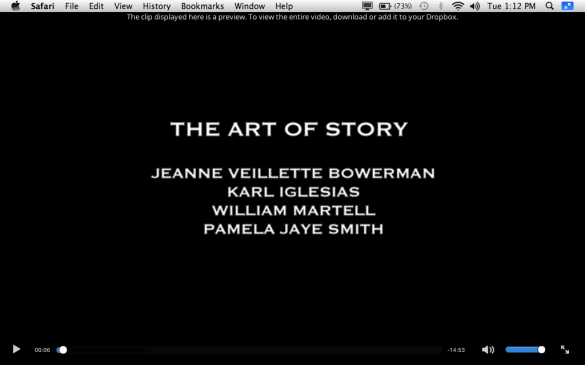Can you learn the art of storytelling? Or is it something that you’re just born with?
Bill Martell: There’s a million things you can learn about how to tell a story. What you can’t learn is how to tell it. That’s the thing that you’re either born with or you’re not born with. If you’re a good enough storyteller you can maybe bypass the not-having-the-amazing-amount-of-talent… uh, that’s why I’m here. It’s not ‘cause I’m immensely talented, it’s just because I figured out how to tell stories that people paid me money for.
Karl Iglesias: It’s really not about the art of story, it’s more about the craft of story… meaning that the art is what you have inside (that’s your talent). The craft you can learn. That’s the only thing that somebody can teach you. We can’t really tell you what to write but we can tell you how to write it in a way that’s appealing to an audience, that’s engaging to an audience, that makes an impact to an audience. One of my old-time favorite quotes by the writer Juan Luis Borges, who said “art is fire plus algebra”. The fire is what’s within you. The algebra is the craft, what can be taught.
Pamela Jaye Smith: Both of the gentlemen make very good points there, so I’m going to approach it from a slightly different angle, which is mythology – the basis of very good stories. Myths are the stories we tell ourselves to explain the world around us and within us. As artists, you naturally tap up into that collective unconscious and start bringing it down (that’s the art part), and then what we can all work on is the craft of it. Presumably you are all here because you have tapped into that huge overshadowing world story (what’s often-called ‘the raincloud of knowable things’ ) and you bring it down and tell the same stories we’ve been telling each other for thousands of years but with your unique individual perspective.
Karl: One of the things that took me a long time to learn is why stories are so important in our lives. It all comes down to myth and Joseph Cambbell. If you study all the myths of the world you’ll realize that they all tell the same stories. And the reason for that is because stories have a bio-evolutionary purpose in our lives. We’re ingrained to really appreciate story to learn from story. Stories are like the owners’ manual to life. The reason we love stories is that there are owner’s manuals and how-to-manuals for everything, except for life. And stories kind of take that purpose, so when you go see a movie, unconsciously your body wants to learn something about life. About love, relationships, about how to solve problems.
Bill: Well, the thing with action films usually is… and again, this gets into the myth: life is a mess… in real life, our problems never get solved…they just go on forever. In an action movie, the problem gets solved because the protagonist steps up and does something that solves the problem and that becomes the lesson of outrunning the fireball and in stories like that. As people we need to step up and confront our fears and confront our problems and resolve them. The fantasy of a good action movie is, you leave it going, “Ahhh… all my problems are solved.” And then you go home, and flip through the bills, you know, and … all this stuff that’s not your problems solved.
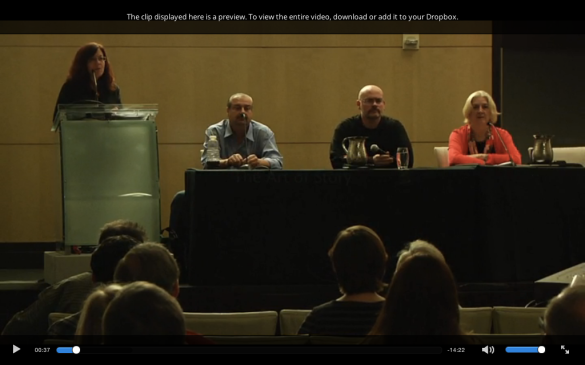
When we’re telling a story, we’re always told you should be thinking about theme…
Karl: Why you’re writing it! Why you’re writing a story. Think about your stories and ask yourself, “why am I writing this?” Other than – ‘Oh boy, I want to get an agent!’, ‘I want to make a million dollars!’, ‘I want to have my name in print!’ which are all kind of fake motivations, right? They’re like materialistic, ego, fame and all that stuff – which is the last thing that’s going to happen to you when you’re a screenwriter. You know you’re not going to hob-nob with Tom Cruise and… no, ok, nevermind… that’s the business side of it. But the dream is that you’re going to be rich and famous. But your motivation is, should be, about wanting to tell a story and why. Like there is something within you that you want to communicate to the world, in other words, you want to teach to the world. There’s something you want to teach that you know the answer to, in a sense. The trick is how to do it so that it’s not in a didactic, preachy way…and that’s where the craft comes in: you want to make it entertaining.
Bill: What you want to do is you want to make the story theme, rather than have the character tell the theme.
Karl: Exactly. The story is the illustration of the theme, in a subtle way
Bill: Right. For me (and this sounds stupid because I write explosion movies)… is, everything always comes from a theme. When I write a script, I sit down and I go, OK. I come up with some crazy idea, and I go, ‘this is a cool idea… but what about it is me personally?; Because every story idea I came up with came from my brain, which means, it’s me! And no matter how crazy the idea is, in some place, there is some issue inside my brain that I’m trying to work out in that story idea… and once I figure out what that issue is, then I can use the story to explore the theme… because that’s really what it’s all about.
Karl: And that’s probably why he has 19 produced credits. Because his stories are thematically driven. In addition to just explosions. When you see that movies are just explosions, and are empty in just a sense, it’s like cereal. Your cereal that’s empty: it’s a sweet treat right now, but it’s devoid of any nutrients and then you’ve got your really whole grains and full of vitamins and stuff. It’s the same with stories: you’ve got your empty stories that you enjoy for like an hour and then you forget about it, and then you want the ones that become classics, you know? I don’t know about you, but the stuff I write, I want them to become classics. I want my movies to be spoken about in film school and in books and analyzed.
Pam: Back at the Mythic Challenges program, what we do is identify a couple of themes that address the 15 Global Challenges. Our pilot program went to a high school in Los Angeles and we chose along with the instructors 4 of the challenges: water, the technology gap, the rich-poor gap… and as a mythologist and using my Beyond the Hero’s Journey work… 2 of the kids decided between themselves which themes they wanted to use, and we had 6 plot points that for their short films they would touch upon about 4 of those 6 plot points.. then they would be tapping into that thematic pattern. And it would resonate with their audience. They were also working with sister schools in Afghanistan. So these kids chose their mythic themes, wrote their stories, filmed them, and you could see them online at Mythic Challenges.com. It will take you to it. The Millenium project is going to translate it into 27 different languages so it’s addressing what the gentlemen were saying about using theme to communicate messages to give cautionary tales, and sometimes just to entertain. One of my favorite ones that they did is barely 2 minutes long and some of the other films are 18 minutes, 11 minutes… but this one, in fact, I won’t tell you about it. I’ll just tell you to go see it. It’s 2 minutes long. There are 2 people in it. It’s shot against a brick wall. And it says so much about the problems of water in the world. And it’s done funny. It’s entertaining. So you can still get across a great message even if you’re blowing a lot of things up.
Think about theme in your subplots too; it’s not just in the A-story…
Bill: That’s where the theme ends up surfacing is that most often too; the subplots are where the characters most often symbolize the theme.
So let’s talk about structure…a lot of people use Save the Cat, Beatsheets, Hero’s True Journeys… with Michael Hauge and Kris Folger…what about writing to formula?
Bill: There is no easy answer. Every script’s its own animal and the thing about it is, at least for me: every script is its own animal, and the basic concept of the 3 act structure, I use… there’s no page numbers involved with that… Except if I end up with like a 50-page Act I, there’s probably something wrong with it, you know? But other than that, there’s no page numbers. There’s no Act I ends halfway down page 27 because I think that’s bullshit. It’s ‘What’s good for this script?’ And often, scripts work different ways. Some scripts are going to have a short Act 1, some scripts are going to have a longer Act 1… Some scripts are going to have a short Act 3 or longer Act 3… you can’t give a page number on any of that stuff. It’s whatever the story is.
Karl: I do actually tackle this all the time in my classes, because it’s always brought up. The fear that people have about structure. They think oh, structure is formula. And the reason they think that is they read that in books, and they think “oh, you should do this, you should do that”.
The way I look at it, I actually have an interesting way of showing it to the class… and the way I look at structure is…imagine you are looking at a human body, right? We’re all human bodies. The structure of the human being is the skeleton. And if we took away, if we peeled away what you look like outside, we all look the same, in a sense. We all have similar skeletons, right? Well, the skeleton is the structure to a story. So, all stories have the same structure in a sense. But they…none of them look the same from the outside. Human beings have the same skeleton but they don’ tlook the same. They all look unique.
The whole thing about page counts and 3-act structure and everything like that is similar to them telling you you have to build a human being and telling you that the bone of the arm has to be exactly 27 inches wrong. And that’s ridiculous! Because everyone has different proportions.
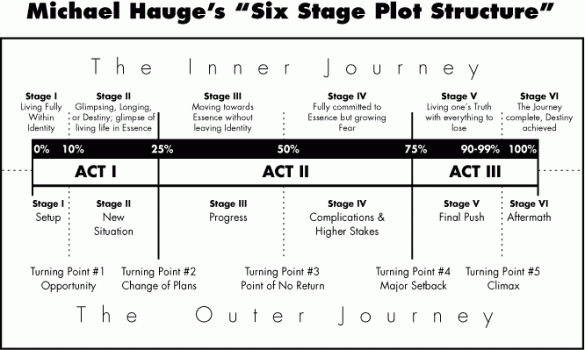
However, what the Greeks used to do, in terms of art, they tell you, well, the head should be about half the size of the torso, and the human being should have two arms and two legs. Well, that’s correct in principle and you should follow that because if you construct a human being that has 3 heads and 1 arm and the foot is over here and the leg is over there, you’re going to go, that’s a mutant, not a human being. And that’s the same with stories. You can go ahead and defy the 3-act structure, but it’s not going to look like a story. It’s going to feel weird. Something’s going to feel weird. Just like if your first act is 50 pages, the audience is going to start feeling weird because it’s ingrained in our psyche, in a sense.
So what I prefer instead of page numbers is percentages. I think Michael Hauge talks about that… like your inciting incident should come in at around 10% of your story… so if you have a 300-page book, well, it should be around page 30. AROUND page 30, doesn’t mean you have to be exactly that. And like, you know, Save the Cat. 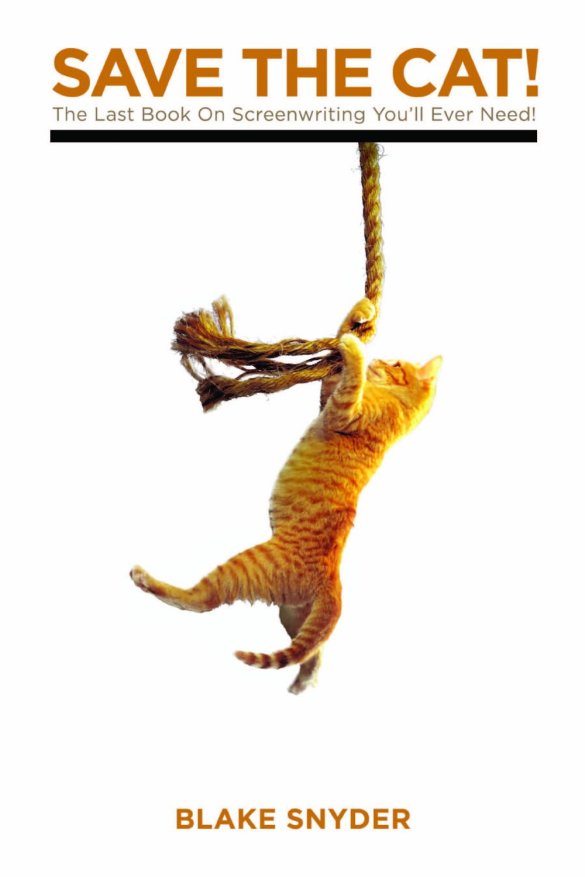 The only thing that I really hated about the book was the fact that he would say, ‘it cannot come on page 4, it has to come on page 5…not on page 6’, and that was a little too weird. Well, you can’t. And now they’re starting to do it by the minute. He has a book where he tells you there’s a beat. Every beat of the story, like something startling should happen on … and he does it by the minute…like 120 beats in your story which…well, what do you do when you have a short, that’s like 2 minutes long? It doesn’t work. So. Look at it that way. Don’t be afraid of structure, because everything has to be structured. This hotel, this room is structured. It has got 4 walls and doors. You can’t construct a house without walls.
The only thing that I really hated about the book was the fact that he would say, ‘it cannot come on page 4, it has to come on page 5…not on page 6’, and that was a little too weird. Well, you can’t. And now they’re starting to do it by the minute. He has a book where he tells you there’s a beat. Every beat of the story, like something startling should happen on … and he does it by the minute…like 120 beats in your story which…well, what do you do when you have a short, that’s like 2 minutes long? It doesn’t work. So. Look at it that way. Don’t be afraid of structure, because everything has to be structured. This hotel, this room is structured. It has got 4 walls and doors. You can’t construct a house without walls.
Bill: For me it goes to Billy Wilder’s whole thing where Act 1 you get a cat up a tree, Act 2 you throw rocks at it, Act 3 you get the cat down from the tree. And for me, that’s it! You create, you introduce the conflict, escalate the conflict, resolve the conflict! And, that’s it.
Pam: I’d agree with that and add once again, a little bit of mythic perspective to it. Absolutely you need to have structure or you’ve got a mess. And I think any of us working with other writers helping to instill structure is to identify the theme, and then once you know what the theme is, you can start working on how are those themes best portrayed? In the mythic themes, I found that there are typically a dozen if not twenty plot points that you will find in each story, each well-told mythic story, on a particular theme… like Stealing Fire from Heaven. And you can look at those plot points and select for a feature story or for a novel, let’s say, at least 12 of them… unlike the kids projects where they just used 6. So go back and look at the old, old, stories that worked and identify, you know, analyze those old myths yourself and you can find those plot points, those beats, and say OK, if I get at least half of these, I’ll be tapping into it. And as far as the cat up the tree, etc, one thing that I like to teach is the SDS: Sympathy – Danger – Salvation. In order for us to want to go along on the journey with your protagonist, we have to have some kind of sympathy with them, for them. So you have to give us something about them that we can either relate to personally, or say, “Oh, I know somebody just like that”, or “I’ve always wanted to be like that”… to get that kind of identification. So the first step is sympathy. The next step is danger. What is the danger that the person is going to be put into? That now that we’re sympathetic to them, we’re going to care, we want to know… what’s going to happen? The explosions are fine!

And then salvation. And the neat thing I like about the Greek tragedies, what they show us is: it doesn’t have to be a happy ending for there to be salvation. We know what it would look like even if the protagonist doesn’t get there. So if you’re telling a cautionary tale, if you’re telling a tragedy, you still want to show us what salvation would look like. What surviving the explosion would look like even if your hero does not survive it.
Resolution doesn’t mean happy ending. Resolution means there’s some sort of end.
Pam: For those stories that you want to be really getting across a message, sometimes it is better if there isn’t a salvation for your heroine.
Karl: Endings are EVERYTHING. There’s a lot of tips and advice about starting with your story and work backwards. In other words, there are a lot of writers who do not start a story until they know the ending. And writers who once they know the ending, work backwards. When you think about it, your whole story is designed to get to that ending. And if that ending is powerful, if it’s emotionally satisfying to the audience, then you win. I think Robert Town that said an audience will forgive you if you have a boring 5-minutes opening, but they’ll never you if you have a 1-minute, boring ending. In other words, the ending is what you leave the theatre with. The ending is what, when you finish reading a script, you have that feeling and then you read the coverage you’ll read, either the reader is satisfied with the ending or not. It’s what people remember. Even if you have movies that are great movies, and then the ending sucks, that’s what people are going to talk about.
Bill: I’ve seen movies that sucked, and then they had this AMAZING ending! And you go, “That was a GREAT FILM!” and watch it later on and go… “That wasn’t a great film, that was just a great ending.”
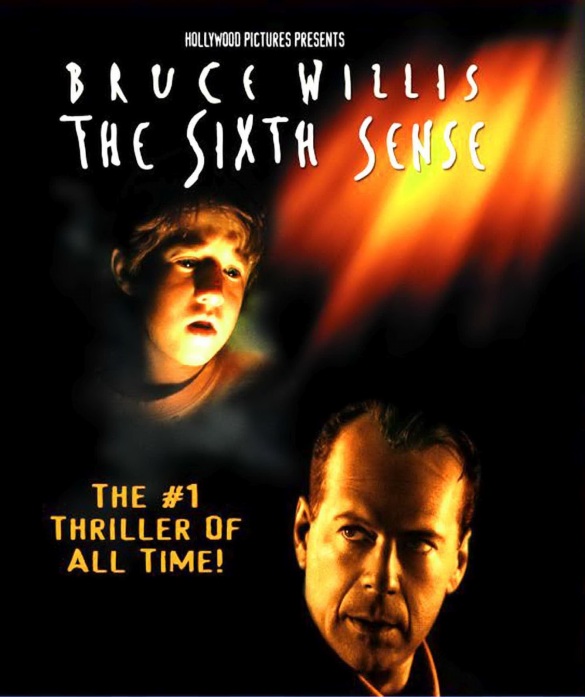
Karl: The Sixth Sense is a perfect example. I remember when that script was going around and it was in development, and people were RAVING about that script because it sold a lot of money and then it was in the wrong font and everything, and people were reading it going, “what’s with this script? I felt it was kind of boring, right?” And then the ending, and you go, “Oh my god!”, you know? And look at the power that it had.
One of the ways that endings are important too is the transformation over character.
Karl: The whole purpose of a story is to transform the character. In cautionary tales, the character didn’t learn the lesson and therefore suffered. And you show that in the ending. On the ones where you see the character transforming, the epiphany, when the character realizes what the lesson that he’s supposed to learn and now he’s armed with enough power to then deal with the ending and then confront the antagonist and …whatever.
Subtext is good, but there are THREE TIMES when somebody NEEDS to say EXACTLY WHAT IS GOING ON.
Pam: Someone needs to say the thematic statement (what the movie is about), somebody needs to say the mission statement (what the protagonist is supposed to be doing) and then someone needs to say the lesson statement ( that typically is at the end).
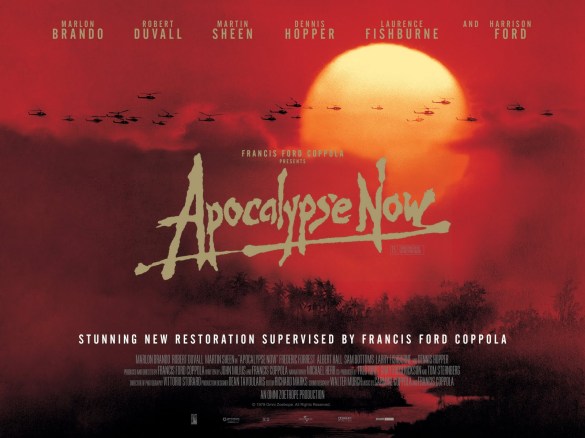
But for a wonderful example of a story that turns around that kind of structure, watch Apocalypse Now. And watch just the first 10-12 minutes of it, because it starts off with the lesson statement, and then the mission statement, and the thematic statement is the 3rd thing. And I could quote it to you word for word, but I would suggest that you go and watch that.
Watch the opening scenes of Apocalypse Now and get to the point where Captain Willard (Martin Sheen) has just gotten his mission and turns and looks out the window as the helicopters start whacking. And it’s a brilliant setup for then what is a more linear film but you’ve been pulled into the story by knowing in the beginning what the lesson is, what the theme is, and what the mission is.
The closer to reality you can get your characters, when you put them into fictitious situations, the easier it will be to identify with them.
Karl: Probably the longest education from me in terms of storytelling has been about character. If you want a story to really have an impact overall… if you want it to be a classic, if you want to be able to relate to it, then it starts with character because all stories are basically illustration of the character who transforms. Because they’re supposed to, right, the purpose of story is to teach you something. To teach you how to live and how to deal with it and how to problem-solve.
The only way for us to really absorb that is by jumping into the skin of the character. ..so the first thing that the reader wants to do, or the first thing that the audience wants to do is: they’re looking for a character to jump into as… like surrogates…that’s why I always advise, when you open a script, try to introduce/try to start with your main character because the reader is going to go, “is this the main character?” and if you start with an empty action scene, or like a waitress and she’s like a no-character, then the reader is going to be really frustrated going, “is this my character?” “oh no, that’s not my character”… or if you introduce ensembles… scripts that open, when you introduce like 20 characters,“hello?” it’s like, how’re you going to realize who your main character is?
Bill: Personal stakes and global stakes. In an action film it’s really important. The biggest problem with a lot of action movies is that they have the global stakes but no personal stakes. Personal stakes is what it’s all about. That’s why we care about the character, that’s why we want that character to succeed.
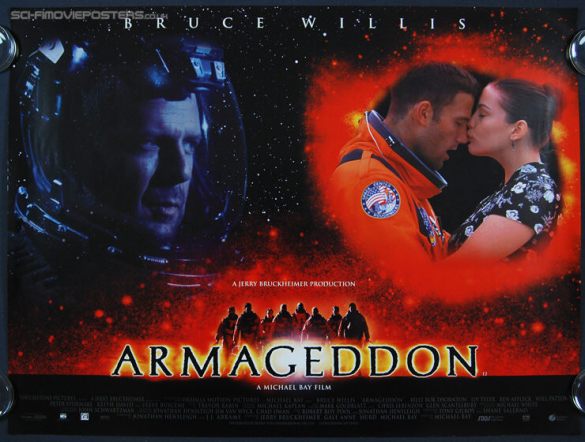
Pam: Armageddon is a good example of that. Where Bruce Willis is saving the world but he also has connection with his daughter and he’s trying to save her.
Bill: But sometimes characters don’t fix the issue.They face the issue, but they don’t fix it. But the thing is, they faced it and but every single scene is going to be about that character dealing with that emotional conflict in one way or another.
Even if it’s outrunning a fireball..although that’s probably not the best example…so what you do, is you give characters in an action scene you give characters decisions to make in the action scene which feed that character decision they have to make.
If a character is all about being selfish and their whole thing is they have to be selfless, then the action scene is they have to rescue somebody else instead of just only rescuing themselves. You create an emotional situation at every scene…even if it is an explosion.
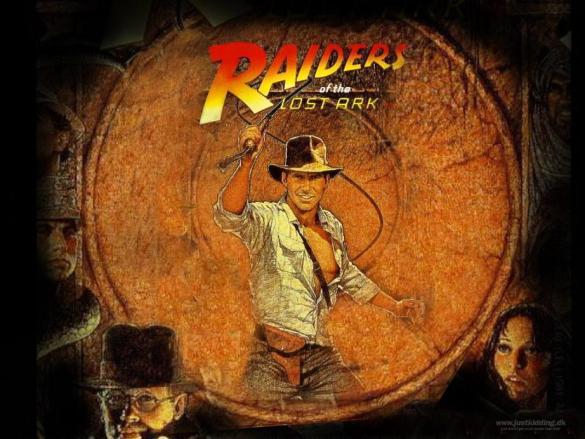
Pam: Indiana Jones (the very first one) Raiders of the Lost Ark, I think is a good example of that. When we first meet Indian in the opening scenes, we learn that he’s afraid of snakes. So we learn that that’s his foible, his fear, his phobia, and then later on in the story he has to jump into an entire pit of snakes in order to save the day. So you got that book ending…
Bill: Not just the day. The woman he loves…
Pam: Save the world!
“Well, Indiana Jones doesn’t change..he doesn’t have a character flaw or whatever…”
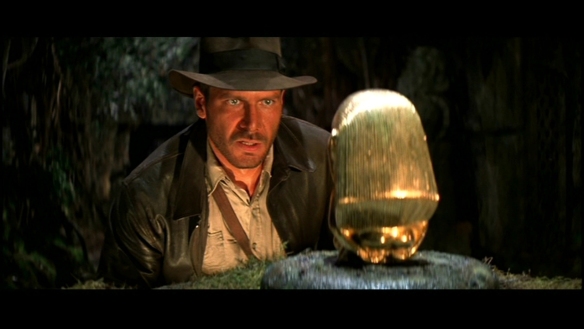
Karl: But the whole movie, when you really think about it, is an argument between secular and spiritual power. And at the beginning, when the agents come and talk about his missions and the arc of the covenant, Indiana Jones kind of scoffs at it. He scoffs at it, he goes, “Oh, that’s just mumbo-jumbo, it’s like spiritual stuff”. And at the end, when he’s tied up, and he tells… this is his moment of realization, when he has changed, really. Is when he tells his girlfriend “Close your eyes”. “Close your eyes”, because he knows now the power of this thing and that’s what saves him at the end. I consider that his transformation; his lesson of learning the power of the arc.
